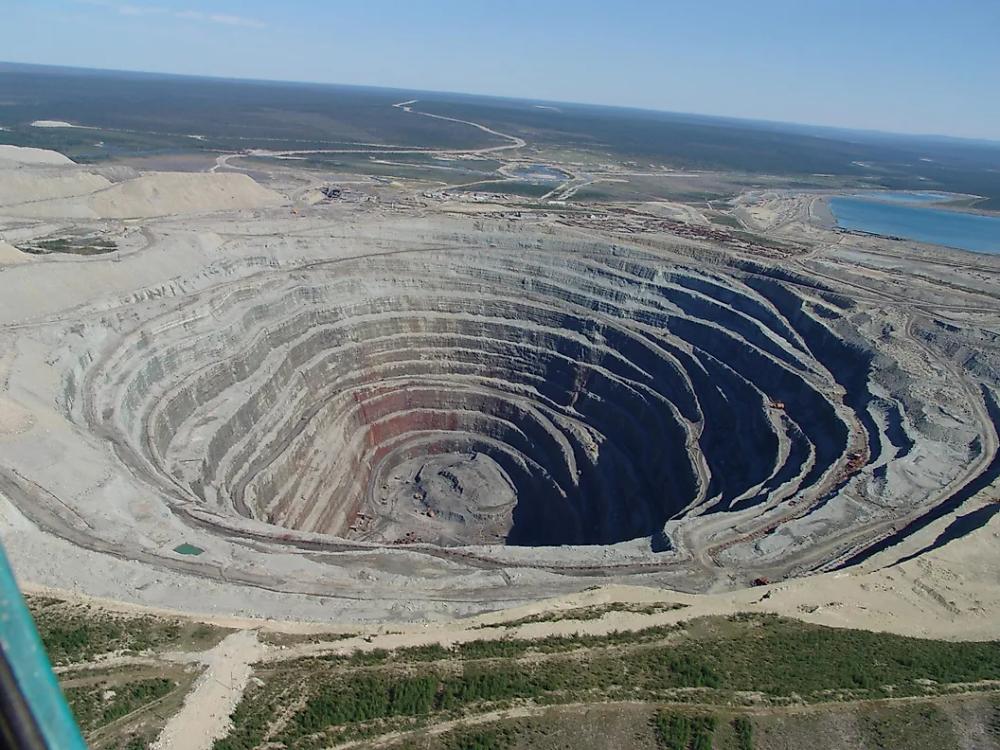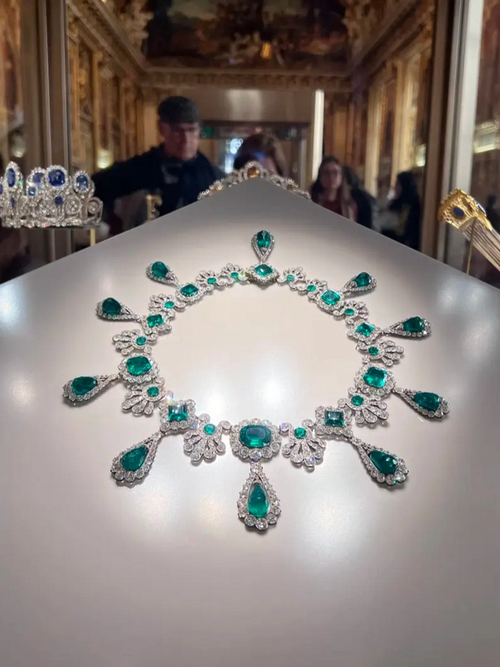Language and currency settings
Change your language and currency settings by selecting your preferences below
Select currency
Select language
Why We Don’t Sell Russian Diamonds
For generations, diamonds have been the ultimate symbol of eternity and love. But what happens when a symbol of hope and commitment also becomes a symbol of war, corruption, and environmental destruction? A significant share of the world’s mined diamonds comes from Russia – and with them follow stories of devastated landscapes, pressured local communities, and the financing of an authoritarian regime.

Russia: A Diamond Superpower – But at What Cost?
Russia is the world’s largest producer of rough diamonds, with production centered in the Sakha Republic (Yakutia) and dominated by the state-controlled company ALROSA. As Yakovleva and Alabaster write: “The diamond mining industry in Sakha has been strongly influenced by state policy and by its integration into the Russian economy” (Yakovleva and Alabaster 2003, 289). This means that diamond revenues form a direct part of the state budget.
According to Read and Janse (2009), Russia – together with Botswana, Canada, South Africa, and Angola – accounted for 83 percent of global diamond production by value in 2007. ALROSA alone delivered 41.5 million carats annually, valued at 2.8 billion USD (Read and Janse 2009, 2). These revenues are used to finance the state apparatus – including military activities. In other words, buying a Russian diamond may mean contributing to the maintenance of a regime at war.
Meet Sunniva – Our New Sustainability Consultant
Climate and Environment – Scars on the Landscape
Russian diamond mining leaves deep scars on the land. In Yakutia lie some of the world’s largest open pits, such as the Udachny mine, forming craters so vast they can be seen from space (Yakovleva and Alabaster 2003, 290). Mining has resulted in the fact that “rivers in the vicinity of mining operations are polluted with nitrates, heavy metals and oil products” (Yakovleva and Alabaster 2003, 291).
This type of pollution harms not only local communities but also global ecosystems. Disturbances of Siberian permafrost release carbon and methane, fueling the global climate crisis (Environ. Sci. Proc. 2023, 5:4). The damage is therefore not merely local – it intensifies one of humanity’s greatest challenges.

Human Burden and Indigenous Rights
Diamond mining in Sakha has had severe consequences for indigenous peoples. Yakovleva and Alabaster document how “indigenous people have lost their traditional means of subsistence, such as fishing, hunting and reindeer herding” (2003, 293). Many communities face heightened health risks, with reported cases of cancer and genetic disorders linked to mining operations (Yakovleva and Alabaster 2003, 291).
Russian diamonds are therefore not only a matter of geology and economics – they are deeply tied to questions of human rights and ethics.
The Hidden Journey: When Traceability Disappears
After extraction, nearly all mined diamonds are shipped to India for cutting and sorting. There, they are mixed with stones from other countries before being certified, often by the Gemological Institute of America (GIA). The result is that “it is almost impossible for the end consumer to know the true origin of a diamond” (Shor and Weldon 2016, 138–139).
This means that a diamond marketed as conflict-free may in fact be Russian. The consumer is left with a product that conceals its true story.
The Truth About Mined Diamonds: What They Don’t Tell You
Ethics Under Pressure: When Mine and Lab Are Mixed
The industry also faces challenges from the mixing of lab-grown and mined diamonds. Shor and Weldon point out that “synthetics are sometimes mixed with natural diamonds in the cutting centers” (2016, 141). This allows diamonds to be sold at inflated prices while undermining transparency.
When traceability and honesty vanish, so too does the consumer’s ability to make informed choices.

Above: Radiant Swan Earring, a sparkling lab-grown diamond
Nangi’s Position
At Nangi, we believe that love should not be built on unethical compromises. That is why we exclusively offer lab-grown diamonds – not because they are perfect or entirely without environmental impact, but because they represent a far more ethical and sustainable alternative.
- Ethical: Lab-grown diamonds do not finance wars or corrupt regimes.
- Environmental: Production involves no open pits, no poisoned rivers, and no destroyed indigenous livelihoods.
- Transparency: Unlike mined diamonds, we know exactly where our stones come from.
For us, luxury is not about closing our eyes to injustice, but about choosing a future where beauty and responsibility go hand in hand.

Love Without Blood
When you choose a diamond, you choose more than jewelry. You choose the story it carries. Should it symbolize love and hope – or be tied to war, pollution, and shattered lives?
At Nangi, the answer is clear: we believe in a form of luxury that never comes at the expense of people, nature, or peace.

Explore our lab-grown diamond rings
References
- Read, George H., and A.J.A. (Bram) Janse. 2009. “Diamonds: Exploration, Mines and Marketing.” Lithos 112S: 1–9.
- Shor, Russell, and Andy H. Weldon. 2016. “Russian Diamonds and Their International Impact.” Gems & Gemology 52 (2): 134–154.
- Yakovleva, Natalia, and Tony Alabaster. 2003. “Triangular Cooperation? Government, Business and Civil Society Responses to Diamond Mining in the Sakha Republic.” Corporate Social Responsibility and Environmental Management 10 (5): 287–296.
- Environ. Sci. Proc. 2023. “Climate Impacts of Mining in Permafrost Regions.” 5 (4).
Join the Nangi family!
Read similar posts






Join the Nangi family!
Subscribe to our newsletter to be the first to know when we release new one-of-a-kind pieces, and gain exclusive access to secret sales and events
Norsk side
Nangi Fine Jewelry © 2024